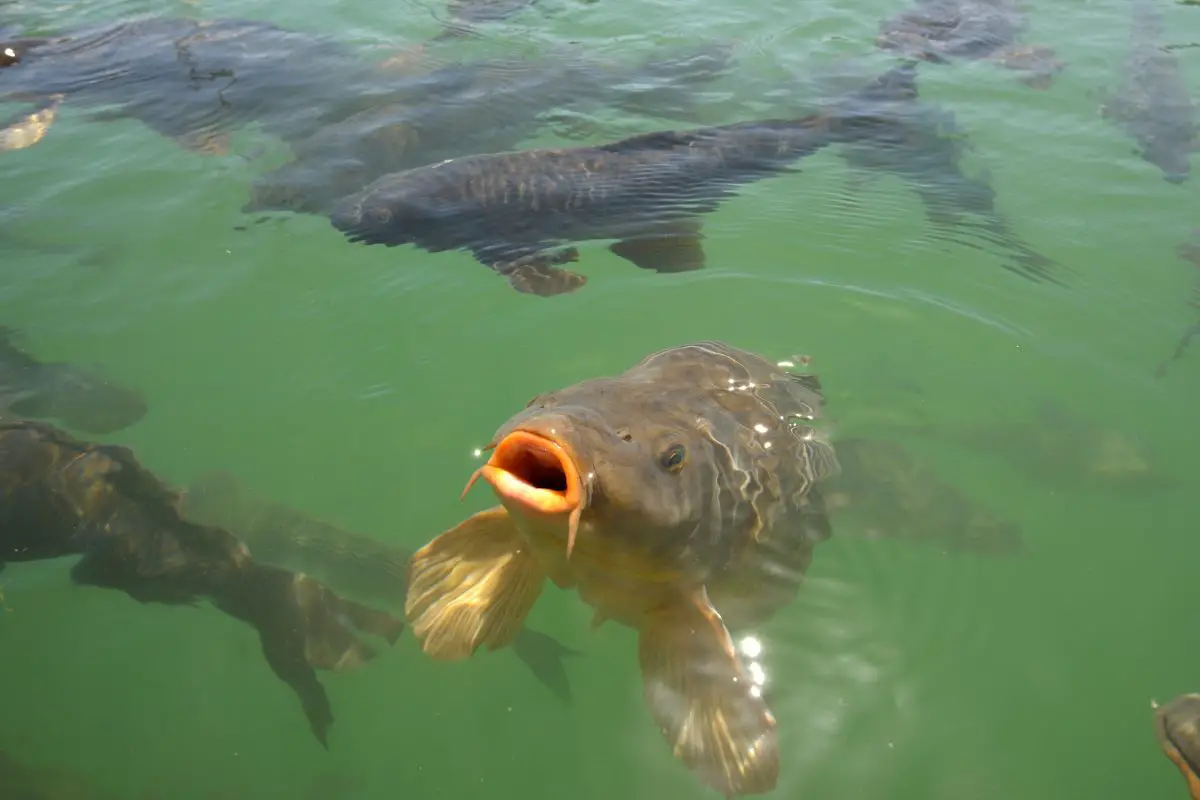
The carp is a type of fish with many sub-species. There are several carp that are considered invasive species in North America. The distribution of carp and their rapid population increase are two examples of how some carp became invasive species.
What are carp? What are its origins? How did they get to North America?
What fish are similar to carp? Knowing the answers to these and other questions helps people to understand more about carp, including how to recognize them. Some people are likely to want to know if they are a good fish for humans to eat if they catch the fish.
One surprising fact is that, in spite of its size, the carp is a true minnow. It belongs to the scientifically defined Cyprinidae family, with each type of carp having a scientific name. The scientific name for the common carp is Cyprinus Carpio, for example.
Carp in North America
Carps are native to areas of Europe and Asia. The common carp was intentionally introduced into North America in the 1800s as a game fish. The Pennsylvania Fish and Boat Commission explains that grass carp was introduced into U.S. waters from Asia during the 1960s.
The purpose of introducing the fish was to control vegetation and for the fish to provide a potential food source. The United States Geological Society (USGS) indicates that the purpose of introducing Asian Carp into U.S. waters during the 1970s was to provide a method for controlling “nuisance” algae blooms in wastewater treatment plants and in agricultural ponds. They were also intended to be a food source.
The Asian Carp escaped their confinement. Ten years after their escape, the carp spread to the Mississippi River basin, to the Great Lakes and to other U.S. waters. Asian carp collectively include the common carp, grass carp, silver carp and the bighead carp.
There are several types of carp, with some bearing close resemblance to other fish.
1. The Common Carp
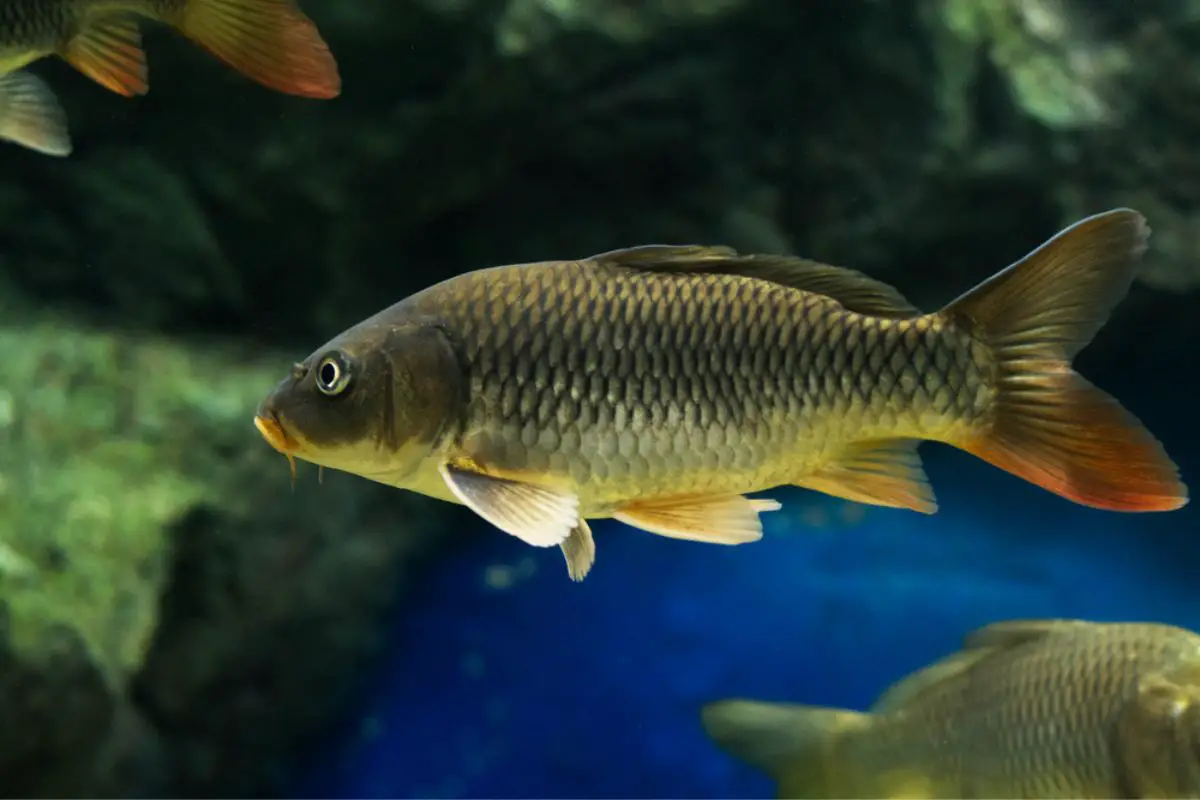
The common carp is a large fish that has large scales. The fish has a small head and mouth. The triangular-shaped head does not have scales.
It has prominent barbels, or whiskers, around its mouth. The common carp has a stout body with brassy coloration, and a long dorsal fin. The fins on the fish are yellow to orange or golden in color.
Common carp grow from 20 to 48 inches in length, yet they are not the largest carp. The fish spread after it invaded waters across much of North America. It is now found in 48 states.
The Minnesota Department of Natural Resources refers to the common carp as “one of the most damaging aquatic invasive species” because of the wide distribution of the fish, and its “severe” impact on wetlands and shallow waters. Common carp cause a decline in water quality, which in turn causes a decline in aquatic plants that are needed by other fish and waterfowl. They also release phosphorous, which increases the abundance of algae.
You cannot introduce common carp into the wild. Anglers who want to release the fish after catching it are permitted to return it to the same body of water.
2. Grass Carp
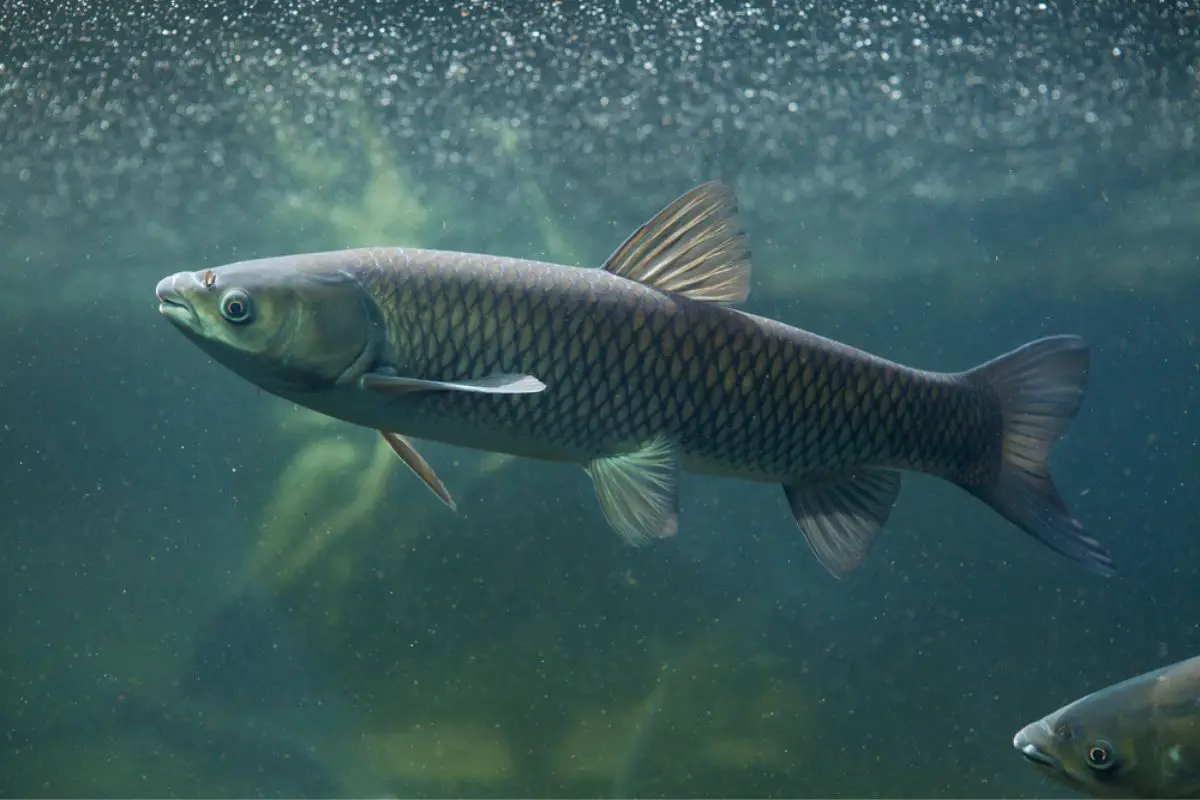
Grass carp have a slender body, with a large, broad head. The dorsal fin is shorter than that of the common carp. The color of a grass carp is different from that of the common carp.
Grass carp have a pale gold color on their sides, and a greenish-brown back. The fish has large scales with dark edges. It does not have the barbels, or whiskers, around the mouth that are a feature on the common carp.
Although the original purpose of introducing the fish into U.S. waterways in the 1960s was to control vegetation, it is now a harmful fish in most waters. It took a mere 16 years for the fish to be stocked in or spread across traveling rivers in up to 40 states. The Pennsylvania Fish and Boat Commission mentions the potential devastating effect that this fish has on aquatic ecology if people release grass carp into the wild.
A grass carp has a voracious appetite for vegetation, eating up to several pounds of it a day. Some areas stock grass carp into the waterways of housing developments and ponds, such as those on golf courses, to control weeds. Other areas, including Pennsylvania, banned introducing grass carp into waters within the state.
The Illinois Department of Natural Resources indicates that grass carp is one of the invasive carp species that is a “mild, clean-tasting fish.” It has low levels of mercury and contains heart-healthy Omega-3s.
3. Silver Carp
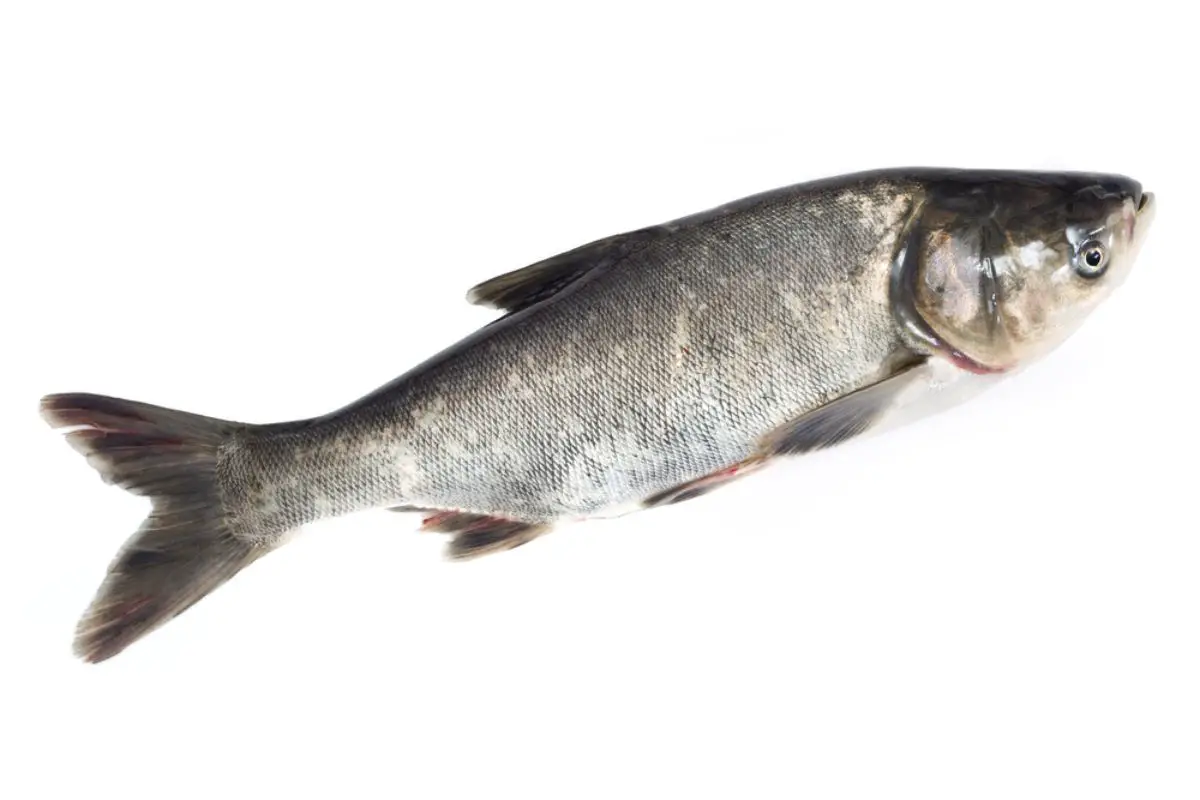
The scientific name for the fish is Hypophthalmichthys molitrix. The silver carp looks different than the more-recognizable common carp. The fish has tiny scales.
It has no scales on its opercles and head. Juvenile silver carp do not have spines in their fins. Juveniles are more silvery in color, compared to adult silver carp.
Adult silver carp grow to a length of up to 41 inches and weigh up to 110 pounds. One reason why the United States introduced the fish into the U.S. in 1973 was for phytoplankton control. The fish escaped confinement, or was introduced into other waters, similar to other invasive carp species.
The National Invasive Species Information Center explains that it competes with other fish for food. There is a risk that the silver carp will cause “enormous damage” to native species. Anglers who want to catch silver carp are likely to try to avoid startling the fish.
The reason is because when something or someone startles this fish, it jumps as high as 10 feet out of the water.
4. Bighead Carp
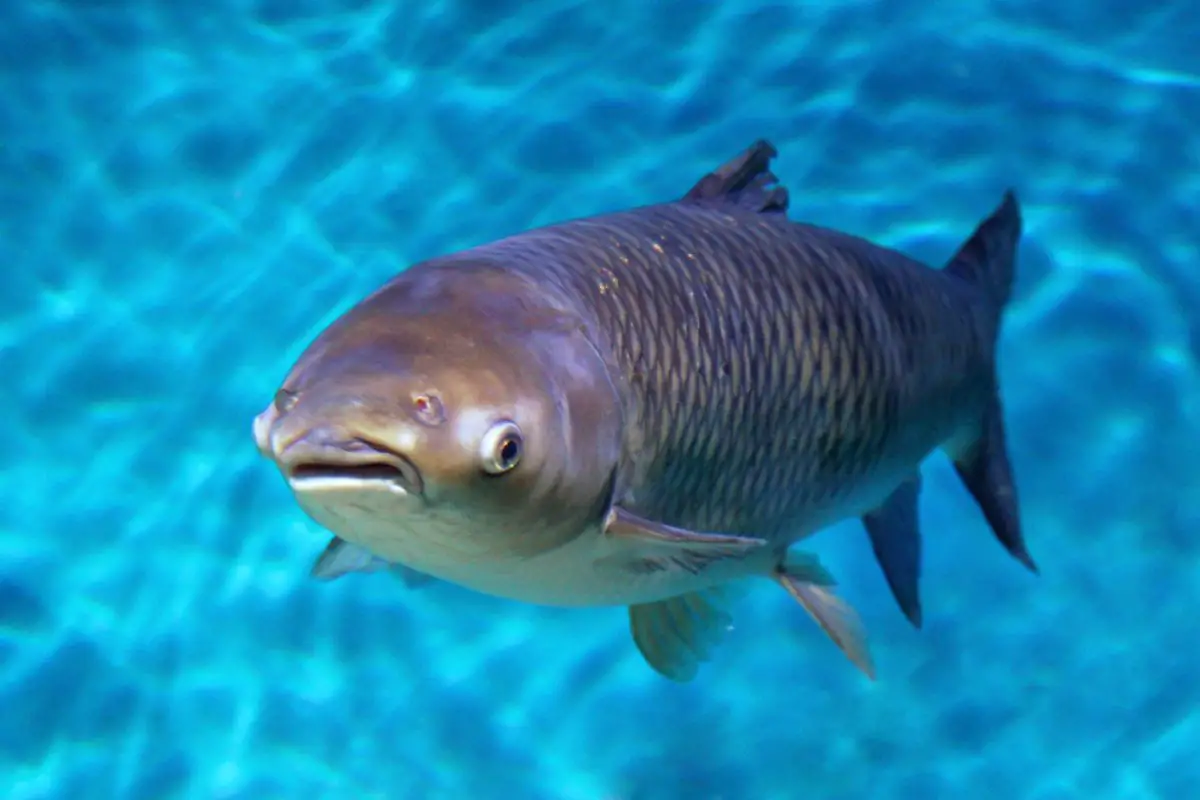
The eyes of bighead carp are situated below and on either side of the mouth. The bighead carp has a large, upturned mouth. It does not have teeth or the barbels that are on some other carp.
The dark gray fish has black blotches on its sides and back. The U.S. imported the fish from China in the 1970s. Flood events led to their escape, as happened with other carp that escaped into the Mississippi and Missouri rivers.
They migrated through connected rivers and other bodies of water to become the wildly invasive species in the U.S. that they are today. The fish grows so large that catching bighead carp sometimes requires special angling techniques. Field & Stream reported on the capture of the world record bighead carp in 2021.
The fish weighed in at 125 pounds, five ounces.
5. Asian Carp
There are several types of Asian carp, although many people refer to them simply as “Asian carp.” The fish reproduce rapidly, which contributes to the fish being a nuisance across much of the U.S. They are an invasive species, with most states or federal agencies issuing warnings or bans on introducing them into the wild.
Asian carp compete with other fish for food and damage or destroy vegetation needed for other species of fish or waterfowl. Asian carp provide a food source for people who like the light-tasting, white fish. They are a good source of protein, Omega3s, and calcium.
6. Koi
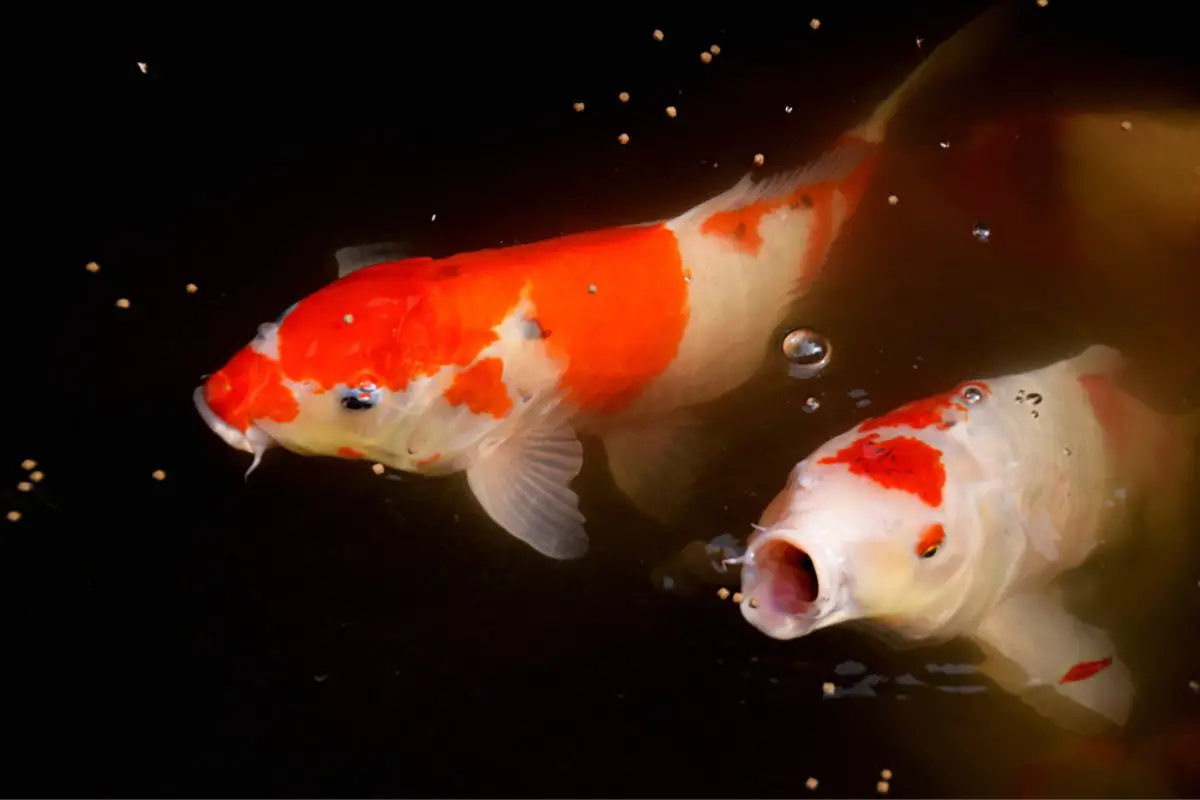
Koi is another type of carp. People like koi as decorative fish. Some people have their own koi pond, and businesses sometimes feature koi fish in their pond.
Koi fish are native to Japan. The Japanese bred koi for perfection, and there are now many variations in the colors of the fish. Royal families prized having koi in their collection for many centuries.
The United States, Europe and the United Kingdom started breeding the fish in the 1900s. They are popular pet fish. Provide the best care for your koi and watch them grow to between two and three feet in length.
7. Siamese Carp
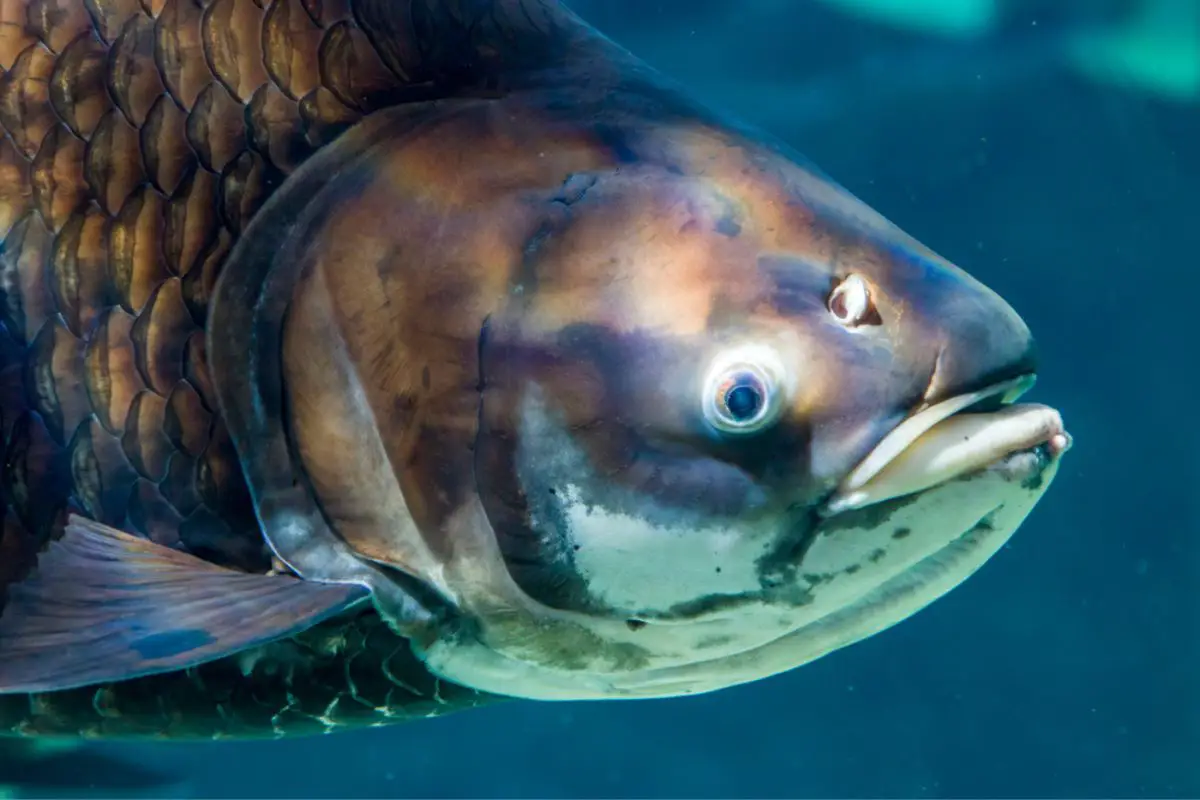
The Siamese carp, or the giant barb, is a rare fish and an endangered fish. The home of the freshwater fish is along the Mekong River, the Mekong Delta, through Cambodia and Thailand. It is the largest species of carp, and an important food source in areas where you find the fish.
A British man fishing in Thailand reportedly reeled in the largest Siamese Carp in the world. It weighed in at 232 pounds.
Fish Similar to Carp
People sometimes mistake other fish for carp. Asian Carp Canada points out that while 26 percent of the people in Ontario believed that they could identify an Asian carp, only three percent of them knew that there are four species of Asian carp. These fish have similar features or characteristics to carp, making it easy to misidentify them for carp.
1. Largemouth Bass
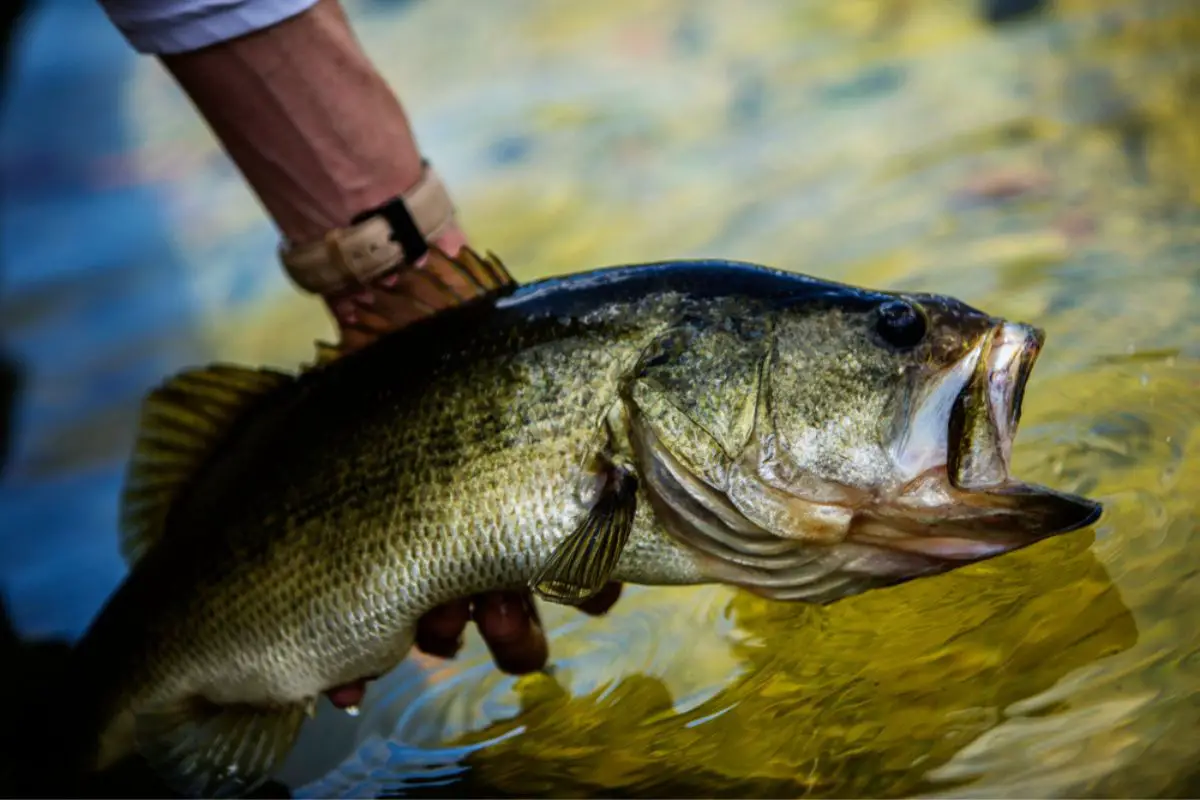
Largemouth bass have colorings similar to carp. The fish has greenish to brownish coloring on its sides. It is a freshwater fish that prefers warmer waters, the same as carp.
The largemouth bass has a large, wide body like carp, although not as large as some carp species. The fish also has a large mouth, similar to carp. Carp and the largemouth bass generally co-exist, at least until one of them eats the eggs or juvenile fish of the other species.
2. Golden Shiner
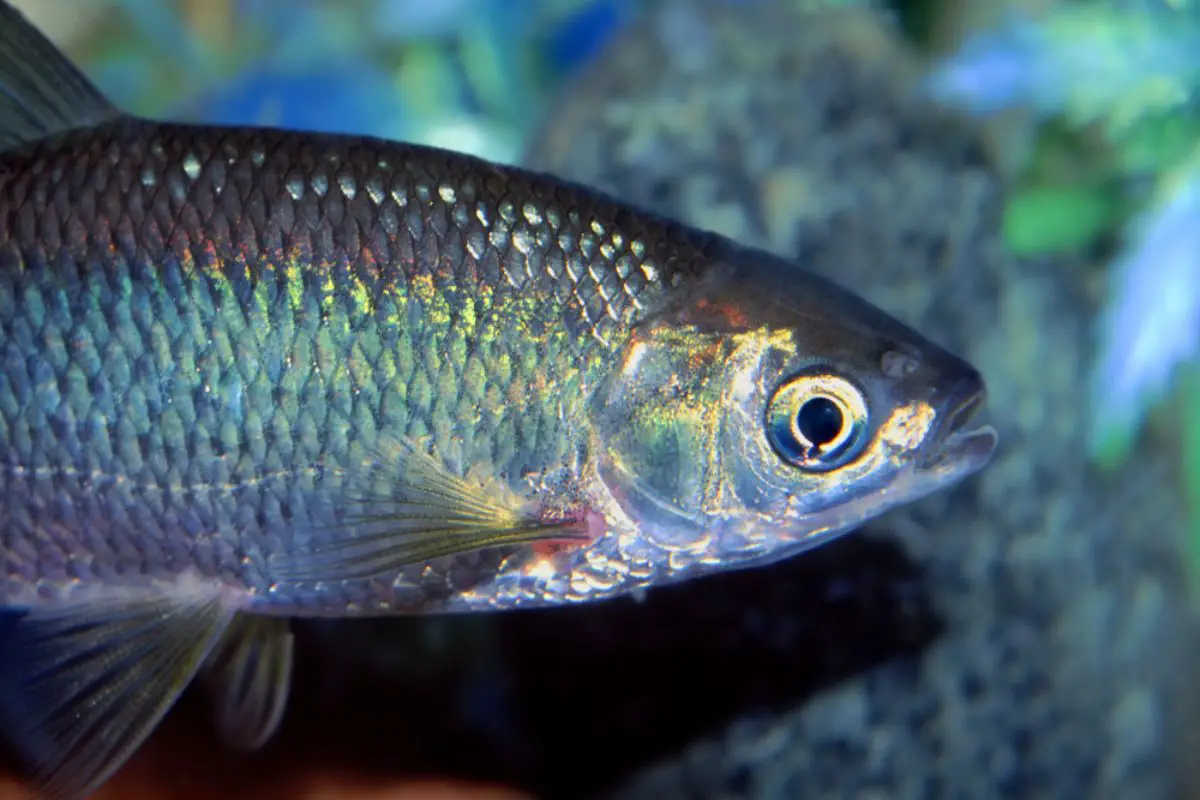
Shiners are the second largest group of freshwater fish known in North America. There are approximately 75 species of shiners in the U.S. One, the golden shiner, has features similar to some species of carp.
Young golden shiners are silvery in color, with a darker band along their side. They turn a golden color when they become adults. The dark band fades in adult fish.
Most shiners are small and reach up to six inches in length. The golden shiner grows up to 10 inches in length. One way to distinguish the golden shiner from the carp is that the golden shiner has a distinctive hump on its back.
3. Bigmouth Buffalo
The bigmouth buffalo is often mistaken for a carp. It looks like a carp without the barbels. Bigmouth buffalo fish range from green to gold to an almost blue-gray to black color.
The mouth of the bigmouth buffalo is more downturned than the mouth of a carp. The body structure of a bigmouth buffalo is similar to that of a carp. They grow up to three feet in length and sometimes reach a weight of 50 pounds.
The fish lives in lakes and rivers, similar to the carp.
4. Smallmouth Buffalo
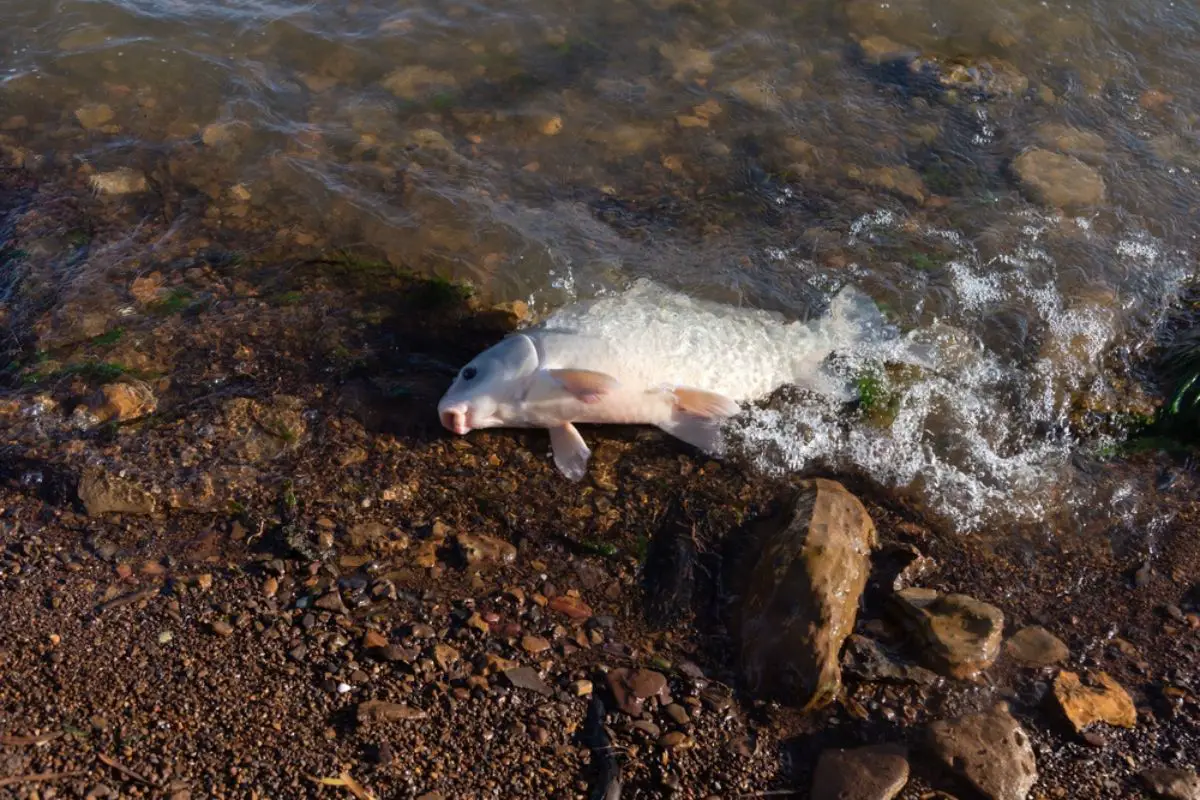
Smallmouth buffalo fish are gray or dark blue on the upper portion of their bodies. They have olive or gray sides and a light-colored belly. Smallmouth buffalo have large scales similar to carp.
They have deep, stout bodies. The fish does not have barbels. The smallmouth buffalo ranges from 15 to 44 inches in length.
5. Creek Chub
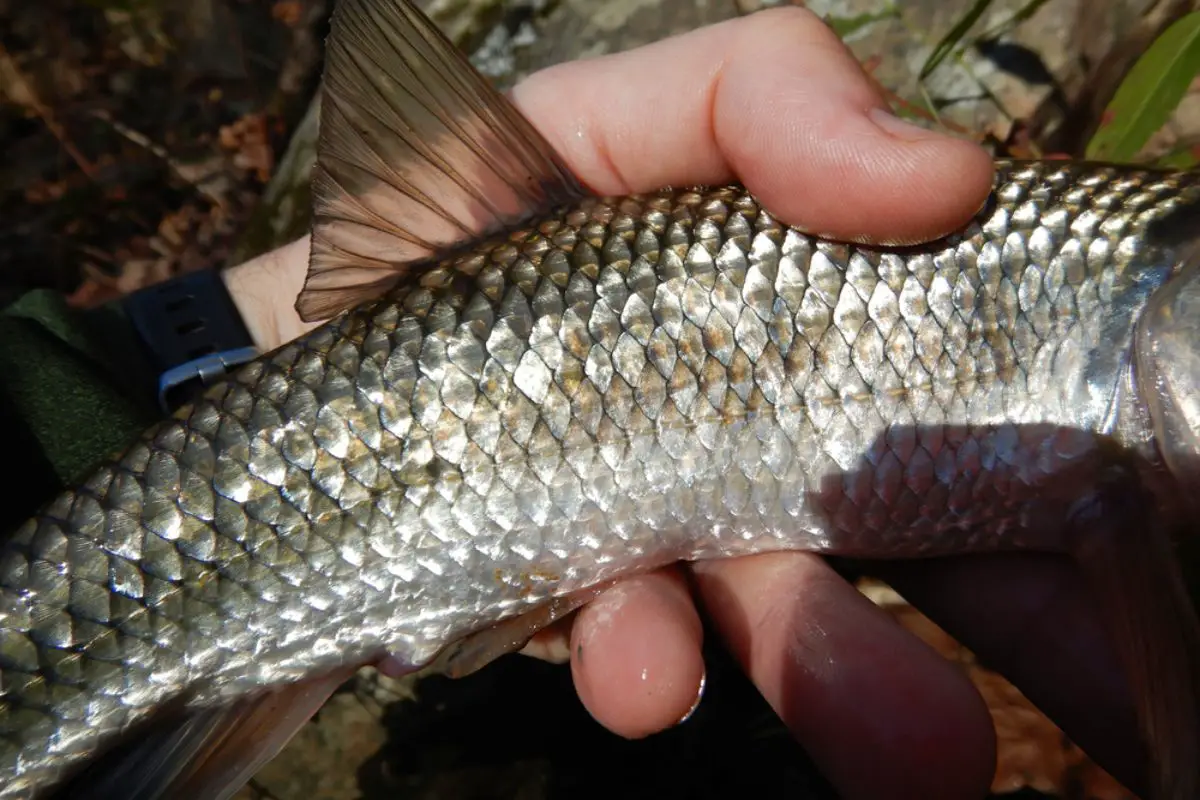
Creek chubs are members of the minnow family. The creek chub has some features similar to those of carp. Both fish have stout bodies and a large mouth.
Grass carp are most similar to creek chubs, with both having a pointed snout. Creek chubs have a dark spot at the front of the dorsal fin and a dark stripe along the side of the fish.
6. Gizzard Shad
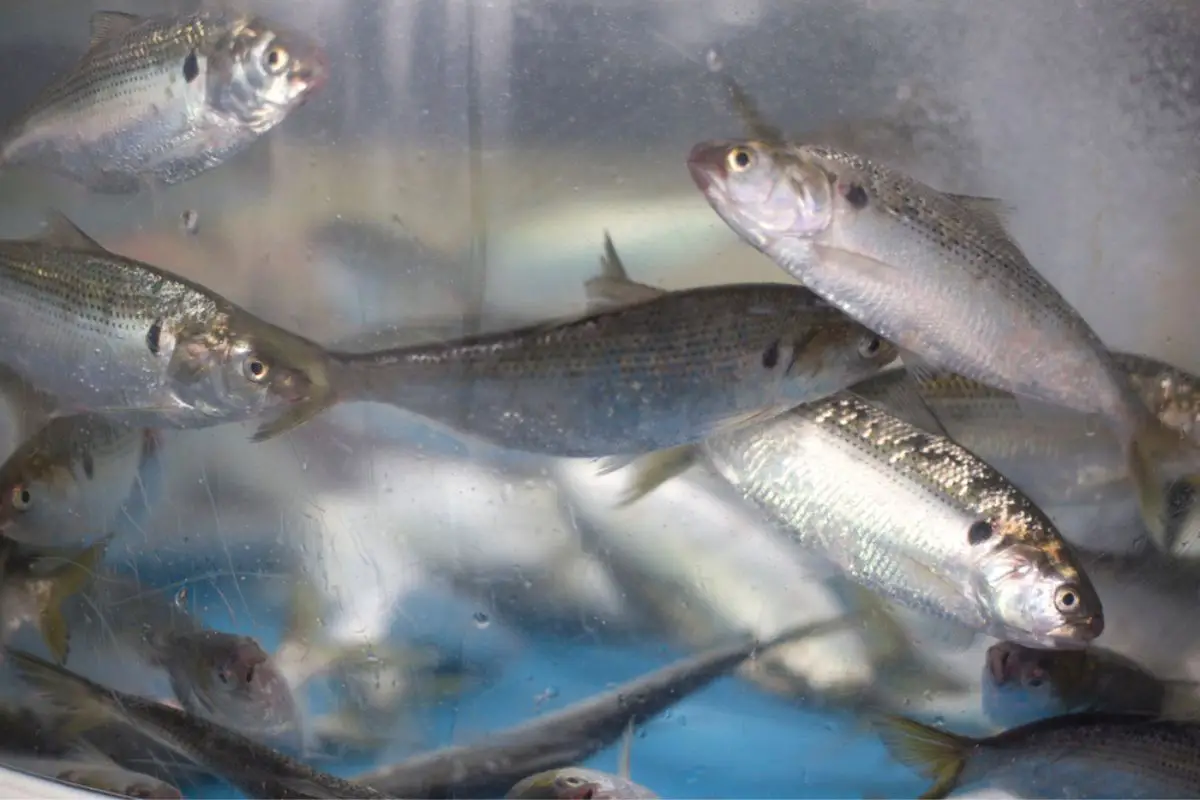
The gizzard shad has features that are similar to those of the silver carp. Both fish have a silvery coloring to their bodies. The gizzard shad is a flat-sided fish with sharp-edged scales along a part of its belly.
The fins are a dusky color, unlike those of the silver carp. The last ray of the dorsal fin has a long, whip-like filament. Gizzard shads have a large spot that is usually purple beyond the upper part of the gill.
The eyes of gizzard shads have different placement compared to the eyes of the silver carp. The eyes on the gizzard shad are above the middle of the head. The silver carp has eyes that are below the middle of the head.
7. Fallfish
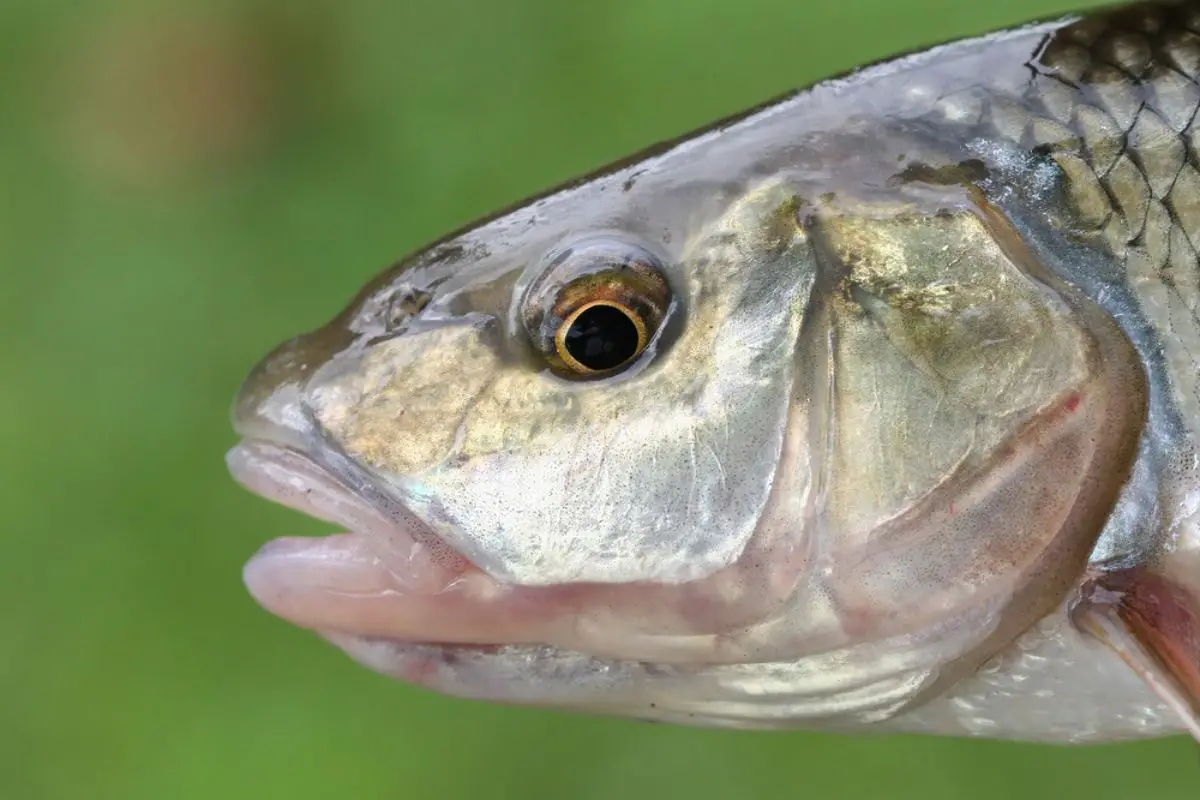
Fallfish are an olive-brown to black color, with silver shading on the sides and a white belly. The fish has a barbel at the side of the snout similar to some carp. Grass carp have a pointed snout, whereas the fallfish has more of a blunted snout.
Fallfish have a longer dorsal fin, while the grass carp has a shorter and rounder fin. The eyes of fallfish are forward set and close to the top of the head. Grass carp have eyes that are in the middle of the head.
Carp fish live in lakes and rivers and other large bodies of water. Fallfish live in slow-moving streams, although they sometimes live in lakes.
8. Mooneye
The mooneye has scales on its body, the same as the silver carp. It has a silver-colored body with darker colored fins. The fish has a blunt, rounded head.
It is a flat-sided fish with large eyes. The eyes of the mooneye take up most of its head, compared to the silver carp, whose eyes are below the middle of the head. Mooneye has teeth in both jaws, on the tongue and on the roof of the mouth.
Silver carp do not have teeth in the jaw, but do have pharyngeal teeth. Mooneye lives in clear lakes, rivers and large reservoirs.
9. White Sucker
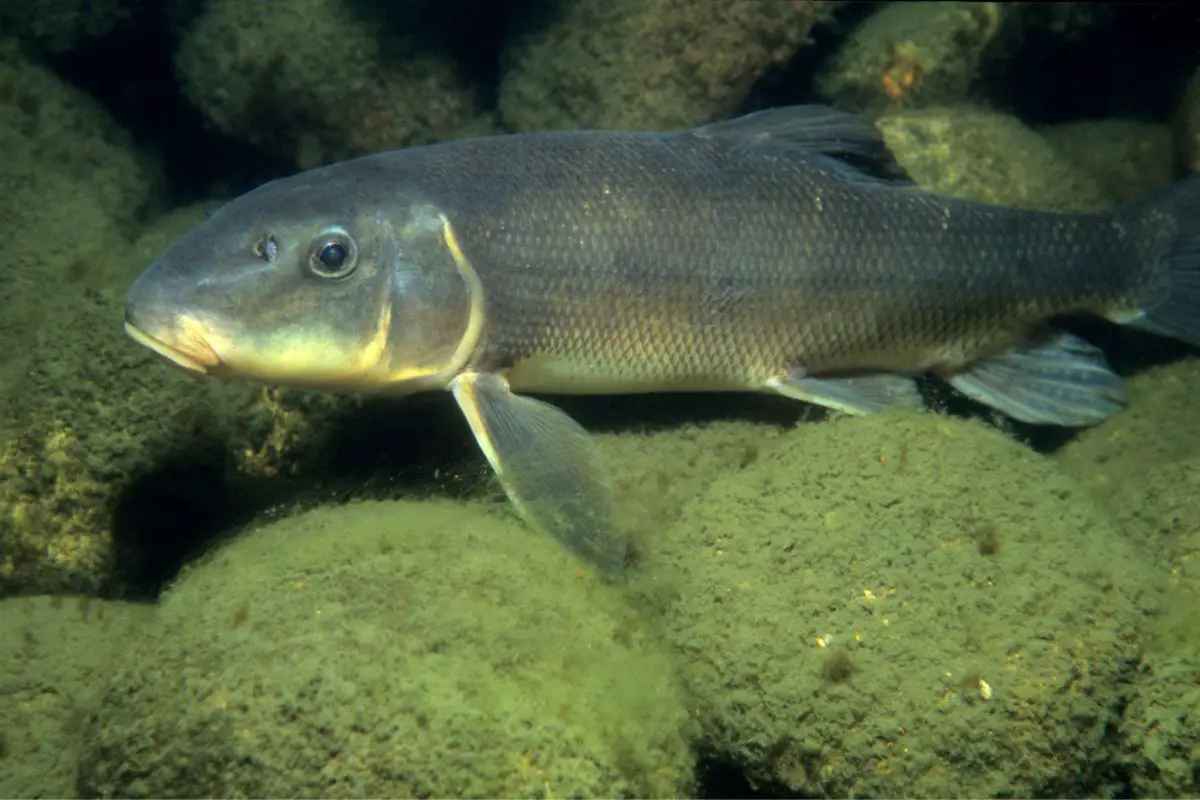
White suckers and carp are similar in size and have other similar features. Both are freshwater fish. The white sucker is grey, green, brown or black.
The fish has a light-colored belly. White suckers, like carp, live throughout much of the U.S. Find them in the Northeast United States and in the Midwestern states.
The fish lives as far south as Georgia and as far west as freshwater bodies of water in New Mexico. They usually live in small streams, ponds and rivers. Carp and white suckers are easy to tell apart once you have a closer look at the fish.
White suckers do not have whiskers. They have eyes at the top of their heads. The eyes of the grass carp, sometimes mistaken for a white sucker, are located at the middle of the head.
The mouth of the white sucker protrudes downward, whereas the carp has a forward opening mouth.
FAQs
How many species of minnows are there?
There are approximately 2,100 species of minnows throughout North America, Africa and Eurasia.
How are carp considered minnows, a smaller fish?
Juveniles of many fish species are sometimes incorrectly called “minnows.” True minnows belong to the Cyprinidae family, and range from a few inches long to the size of a large carp.
Are there other types of carp?
There are 18 identified species of carp, although most sources consider only the larger species when referring to carp.
Sources:



